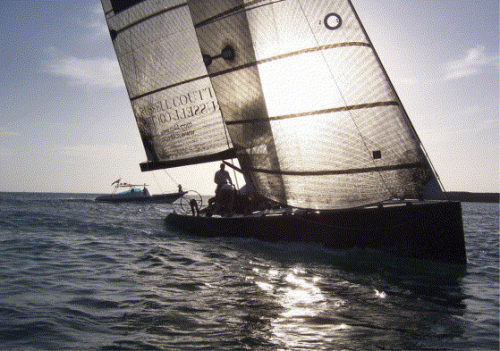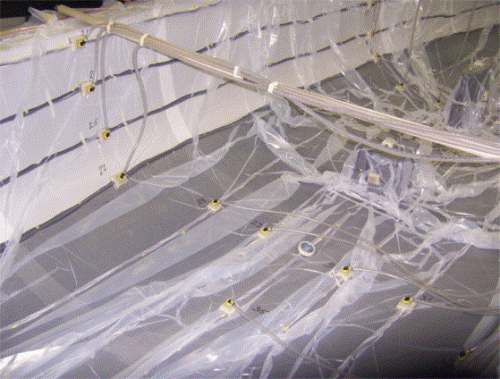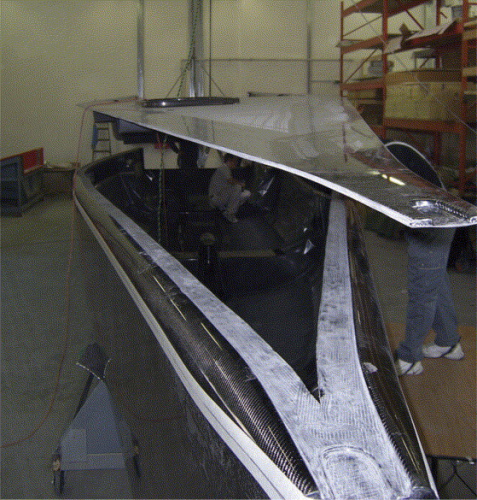


Pauger was founded in the early 1990s by Hungarian sailor Dénes Paulovits, initially making 8-15 m sailing boats from glass fibre reinforced plastic (GRP). These included the Pauger 70, a 15 m long racing boat built on a balsa core. Prior to this, Paulovits designed and built composite tuning options (spoilers, modified bow or transom pieces and rig elements) for cruising yachts.
When the marine industry started to use carbon fibre, Paulovits decided to move on from fibreglass boat building and launched Pauger Carbon to specialise in the design and production of carbon composite masts and rigging. The company's production steadily grew from one-off projects to serial production, with products increasing both in numbers and in size. The Solaris 40 – an Italian one-design class – features a carbon Pauger rig, including mast, boom and spinnaker boom. Pauger created a purpose-built mast-building facility featuring a 30 m long oven that enables the post-cure of a 30 m mast.
In the meanwhile, Dénes Paulovits developed a racing boat for the most prestigious regatta on Lake Balaton (a non-stop circumnavigation around the Hungarian lake). The boat, Szamuraj Jack, was designed and built in under a month and managed a podium finish in the regatta. This return to boat building was temporary and mast building remained the main focus of the business until Slovenian naval architect Andrej Justin contacted Dénes Paulovits for a quotation for a rigging item for the Russell Coutts 44 (RC 44). The yard subsequently won the production of the hull and deck of the RC 44. The hull and deck are a carbon/epoxy sandwich construction manufactured using vacuum infusion. Today, installation and assembly is also carried out at Pauger's facility.
RC 44
The RC 44 was designed by three-times America's Cup winner New Zealander Russell Coutts and Andrej Justin. The boat is designed to be raced with only seven crew.
The yard produces one boat per month. Lamination takes 3-4 weeks, and mast and final assembly another 3-4 weeks. It is the biggest boat Pauger produces.
The hull, deck, structural liner, keel, rudder and rig were structurally optimised using Nastran software. All the composite parts are production from composite female moulds built on NC machined plugs.
Hull, deck and stern scoop are built in a sandwich construction using epoxy resin and carbon unidirectional and biaxial fabrics. A twill carbon roving is used to give a smooth surface finish on all external surfaces. The core material is 10 mm, 20 mm and 25 mm thick Airex with a density of 75-100 kg/m3. Carbon fabric is supplied by Zoltek. (Zoltek has a carbon fibre production plant in Budapest.)
The internal structure is a double cross frame designed to take all the keel, mast and shroud loads, minimising the hull and deck stress and deformation. It is built using epoxy resin and carbon unidirectional and biaxial fabrics. Carbon roving is again used to provide a smooth surface on visible surfaces.
Hull, deck, structural liner and stern scoop are built using vacuum infusion technology and post-cured in two steps in the oven. The hull is cured at 80°C for around 24 hours in a custom-built oven heated by hot air. The complete boat is then assembled and post-cured at around 110°C for a few hours.
The rudder and rudder shaft are built using resin transfer moulding (RTM). The keel is built in carbon prepreg.
All external visible surfaces and the structural liner are ‘carbon look’ as standard. External surfaces are protected from degradation by ultraviolet (UV) light with a transparent high gloss varnish. The external surfaces can be painted with polyurethane (PU) paint if required.
Portfolio
Today, Pauger Carbon has today two production facilities – the one for boat building and boat assembly near Budapest, where there are around seven employees, and the other in Gyuro (35 km from Budapest) for mast making, where around 10–15 people work. Dénes Paulovits did not give up the production of custom racers and Pauger has a building portfolio of four different projects at the moment including the RC 44, the Jean-Marie Finot designed Open 6, 50, and the Pauger 33.
The first RC44 race was held in Dubai in March and the first RC44 official regatta is planned for this month.






